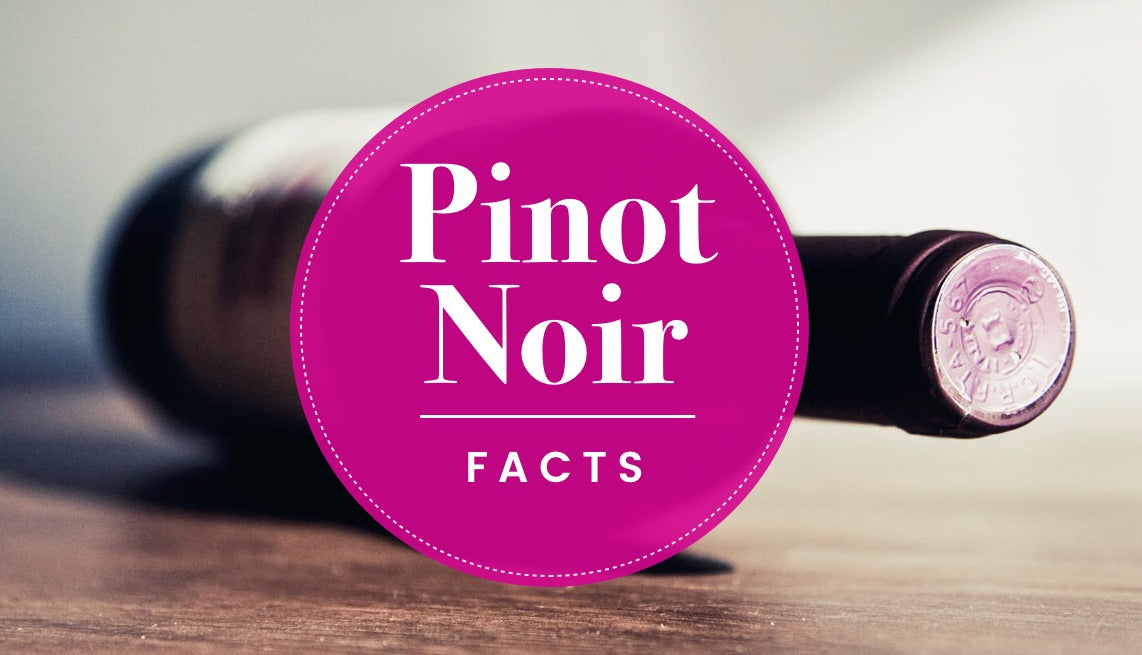
Most Interesting Facts about Pinot Noir Wine
 When you hear someone saying "Pinot Noir" your mind instantly takes a trip to the delightful Burgundy landscapes where these savory drinks come from. To your mind come images of a rich, medium-bodied French red wine that you can pair with every food you wish. Are you salivating already? Do your taste buds crave for a sip of the "Red Burgundy?"
When you hear someone saying "Pinot Noir" your mind instantly takes a trip to the delightful Burgundy landscapes where these savory drinks come from. To your mind come images of a rich, medium-bodied French red wine that you can pair with every food you wish. Are you salivating already? Do your taste buds crave for a sip of the "Red Burgundy?"
If the answer is yes, then treat yourself to a glass of this savory drink, lay back, relax and discover the most interesting facts about Pinot Noir!
The grandparent of modern wine types
If you enjoy the Pinot Noir taste in the 21st century, you will be glad to know that you are continuing a 2,000-year old tradition. This type of wine has been documented in Europe ever since the ancient Romans that occupied modern-day France in the BC era.
Back then, people did not have crystal glasses for red wine, but they still enjoyed the cherry-like taste of Pinot Noir in copper grails and tin cups. In fact, many believe that its ancient popularity has forced wine producers to alter grape crops and come up with assortments that we savor today, such as Shiraz.
Pour another glass of Black Pine Cone

Did that fact open your appetite for more wine trivia? If so, then pour yourself another glass of Black Pine Cone, which is what Pinot Noir translates to from French. Back in the day, vine growers did not like to waste time with fancy name giving. They simply named the grapes exactly like what they resembled: a bunch of black pine cones. The name stuck, and so does the fruity aftertaste of the liquor you are sipping at the moment.
We owe it to the monks
Pinot Noir is a highly versatile type of grape culture that can grow in various cold regions of the world. However, the taste of the wine may differ slightly from one area to another, and sometimes from different cultures that are just a few miles apart.
This interesting variation in Pinot Noir taste is due to the monks in The Middle Ages who were very concerned with the quality of the liquor that they stored in the cellars. Their obsession with creating the perfect Pinot Noir pushed them into mapping vast areas of land and determining through trial and error which region produces the most suitable grapes for this liquor. Their attention to detail is why we have different region-based prices for wines of the same variety.
Pinot Noir keeps everything cool
Several countries across the world produce Pinot Noir. However, you will not find many of them around the Equator line, since this type of grapes enjoys chilly climates like its native Burgundy and Champagne. Additionally, you may find large cultures in Germany, Switzerland, Chile, New Zealand, and Northern Italy. So, if you are traveling to Greece or Mexico, asking for a local brand of Pinot Noir would make you look a bit foolish, to say the least.
Easy to drink, difficult to grow
Almost anyone enjoys a nice glass of Pinot Noir whether as an appetizer or with a meal. It is a savory wine that it is easy to drink and affordable in most countries. Unfortunately, if you are planning to have your own vineyard of Pinot Noir grapes, you might not find it as simple as it seems.

Pinot Noir grapes are highly susceptible to diseases and rotting. Their berries grow tightly and leave very little space for water to drain, which enables the fungus to grow and gradually destroy the grape. They also have a low level of tannin, which in other grape types acts as an umbrella for UV radiation.
Additionally, Pinot Noir vines need to grow on a well-drained soil. It requires dry conditions, but it also needs occasional rain and fog to develop properly. So, if you are keen to plant this type of grapes, you will need to invest a lot of time in location scouting.
Pinot Noir doesn’t like to mingle
If you are the type of person that rarely goes to a party and when you do you feel miserable, then Pinot Noir is your matching liquor. This type of wine is not great at blending in with other wines. It has a high level of transparency and produces poor-tasting combinations when you mix it with any other wine variety.
In fact, you will notice that most Pinot Noir bottles have the originating vineyard mentioned on the label, because the wine comes from one specific culture. Just to get a better idea of this interesting fact about Pinot Noir, most other wine bottle labels carry the name of the region where the grapes come from, and in the worse of cases just the country of origin.
Pinot Noir Rosé makes everything rosy
You might know Pinot Noir by its fully red, dark color, which is made available by most wine producers in the world. However, if you look hard enough you will find Pinot Noir in its Rosé version.

Some manufacturers like to pick the grapes when they are not ripe yet, and the color is pink. At this stage, the berries carry very little sugar, which produces wine with a high level of acidity. The resulting drink is a crisp and refreshing Pinot Noir that goes great with the hot summer days.
Paul Giamatti revealed Pinot Noir to the U.S.
This interesting fact about Pinot Noir is not entirely true. The Red Burgundy was well-known in the United States for centuries, but it grew immensely in popularity following the release of the movie “Sideways” in 2004.
In this Alexander Payne directorial piece, Paul Giamatti plays Miles, a wine lover that travels through the wine country with his soon-to-be-married friend, Jack (Thomas Haden Church) in what should be a savory goodbye to bachelorhood.
Now, Miles is a staunch hater of Merlot, to which he prefers Pinot Noir at any given time. The movie developed a strong cult following especially among wine lovers, who followed in Miles' footsteps and affinities, and declared lifelong devotion to Pinot Noir. Nowadays, as it is the case with good wine, the movie gets better in time and attracts even more people to try the captivating taste of Pinot Noir.


